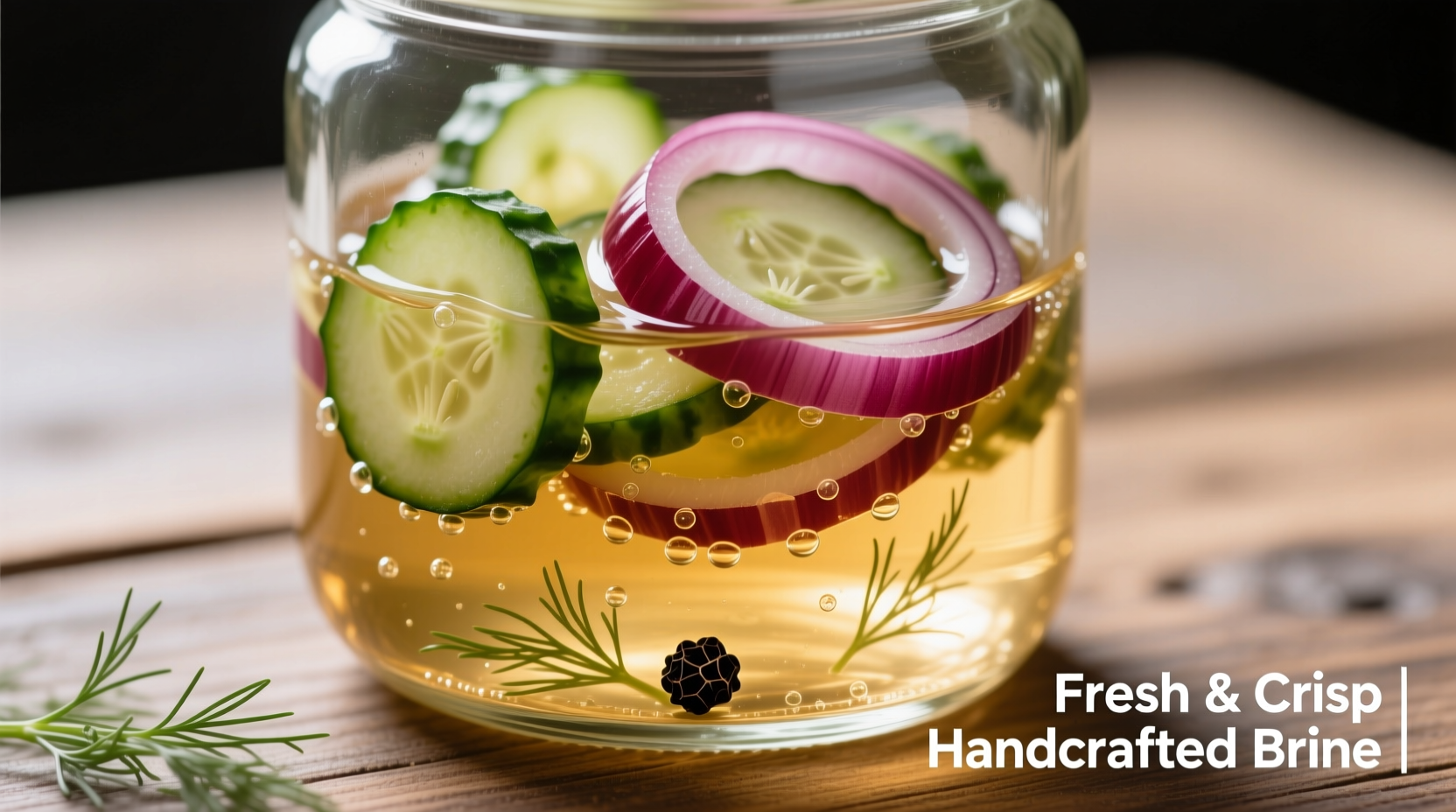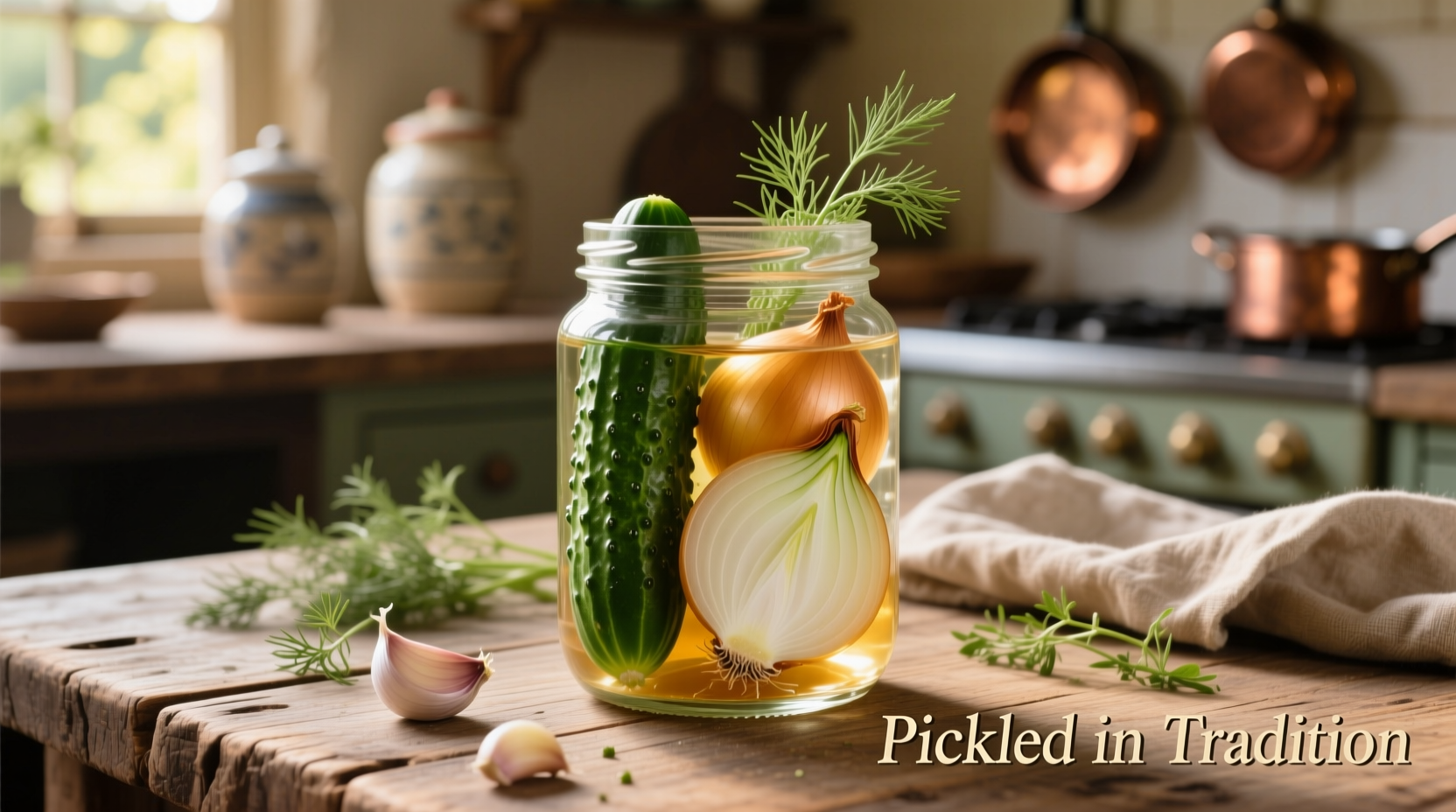Quick-pickled cucumber and onion in vinegar delivers crisp, tangy results in just 30 minutes—no canning required. This versatile condiment enhances sandwiches, tacos, salads, and grilled meats while providing probiotic benefits from raw vinegar fermentation. Follow our tested method for perfect crunch every time.
Discover why this simple vinegar-based preparation has become a kitchen staple worldwide. Unlike traditional canning, quick-pickling preserves cucumber's signature crunch while transforming ordinary onions into sweet, translucent gems. Food scientists at the University of Georgia Cooperative Extension confirm that vinegar's acetic acid (minimum 5% concentration) effectively preserves vegetables for refrigerator storage up to 3 weeks when properly prepared.
The Science Behind Perfect Quick-Pickling
Understanding the chemistry ensures consistent results. Vinegar's acidity (pH 2.4-3.4) halts bacterial growth while enhancing flavor penetration. The FDA's Food Code specifies that properly acidified vegetables maintain safety when stored below 40°F (4°C). Crucially, slicing vegetables uniformly to 1/8-inch thickness maximizes surface area for optimal flavor absorption without compromising texture.
| Ingredient Ratio | Texture Result | Flavor Development | Optimal Use Timeline |
|---|---|---|---|
| 1:1 vinegar to water | Firm crunch maintained | Balanced tanginess | 30 min - 24 hours |
| 3:1 vinegar to water | Slightly softened | Pronounced sourness | 24-72 hours |
| Vinegar only | Noticeably limp | Overpowering acidity | Not recommended |
Step-by-Step Preparation Guide
Follow these professional techniques for flawless results:
- Prep vegetables: Slice cucumbers (peeled or unpeeled) and red onions into uniform 1/8-inch rounds using a mandoline for consistency
- Create brine: Combine equal parts distilled white vinegar and water (2 cups total) with 2 tbsp sugar and 1.5 tsp kosher salt in a saucepan
- Heat gently: Bring to 160°F (71°C)—just below simmering—to dissolve sugars without cooking vegetables
- Pack jars: Place vegetables in clean glass containers, adding flavor enhancers like dill sprigs or mustard seeds
- Pour brine: Cover vegetables completely, leaving 1/2-inch headspace
- Cool properly: Let sit at room temperature 30 minutes before refrigerating

When This Method Works Best (And When It Doesn't)
Context matters for successful pickling. This technique excels for immediate consumption but has limitations:
- Ideal for: Fresh vegetable preparations, meal prep components, enhancing street food tacos, adding brightness to heavy dishes
- Not suitable: Long-term preservation (use proper canning for shelf-stable results), watery vegetables like zucchini, or when seeking fermented complexity
- Temperature sensitivity: USDA research shows texture degradation accelerates above 45°F (7°C)—always refrigerate
Global Variations Worth Trying
Chef Antonio Rodriguez notes: "Every culture adapts this basic formula to local tastes." Try these authentic twists:
- Mexican escabeche: Add jalapeños and oregano for taco garnishes
- Mediterranean style: Substitute red wine vinegar and add lemon zest
- Asian fusion: Use rice vinegar with 1 tsp sesame oil and ginger slices
- Sweet Southern: Replace half vinegar with apple cider vinegar plus 1 sliced shallot
Troubleshooting Common Issues
Fix these frequent problems with professional solutions:
- Soggy vegetables: Overexposure to heat—cool brine slightly before pouring and never use boiling liquid
- Bland flavor: Insufficient acid ratio—adjust to 60% vinegar if using after 48 hours
- Cloudy brine: Normal with raw vinegar; use distilled vinegar for crystal-clear results
- Excessive saltiness: Rinse vegetables briefly before serving if stored beyond 72 hours
Maximizing Culinary Applications
This versatile condiment transforms ordinary meals:
- Add to fish tacos for authentic Baja California flavor profile
- Top grain bowls to cut through rich dressings
- Mix with Greek yogurt for instant tzatziki variation
- Layer on burgers to replace standard pickles
- Stir into tuna salad for brightness without mayo overload
Frequently Asked Questions
Get answers to common concerns about preparing cucumber and onion in vinegar:











 浙公网安备
33010002000092号
浙公网安备
33010002000092号 浙B2-20120091-4
浙B2-20120091-4